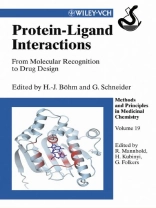The lock-and-key principle formulated by Emil Fischer as early as the end of the 19th century has still not lost any of its significance for the life sciences. The basic aspects of ligand-protein interaction may be summarized under the term ‘molecular recognition’ and concern the specificity as well as stability of ligand binding.
Molecular recognition is thus a central topic in the development of active substances, since stability and specificity determine whether a substance can be used as a drug. Nowadays, computer-aided prediction and intelligent molecular design make a large contribution to the constant search for, e. g., improved enzyme inhibitors, and new concepts such as that of pharmacophores are being developed.
An up-to-date presentation of an eternally young topic, this book is an indispensable information source for chemists, biochemists and pharmacologists dealing with the binding of ligands to proteins.
表中的内容
Preface.
A Personal Foreword.
List of Contributors.
List of Abbreviations.
Prologue (D. Brown).
Prediction of Non-bonded Interactions in Drug Design (H. Böhm).
Introduction to Molecular Recognition Models (H. Schneider).
Experimental Approaches to Determine the Thermodynamics of Protein-Ligand Interactions (R. Raffa).
The Biophore Concept (S. Pickett).
Receptor-Ligand Interaction (M. Höfliger & A. Beck-Sickinger).
Hydrogen Bonds in Protein-Ligand Complexes (M. Williams & J. Ladbury).
Principles of Enzyme-Inhibitor Design (D. Banner).
Tailoring Protein Scaffolds for Ligand Recognition (A. Skerra).
Small Molecule Screening on Chemical Microarrays (G. Metz, et al.).
Subject Index.
关于作者
Hans-Joachim Bohm is the editor of Protein-Ligand Interactions: From Molecular Recognition to Drug Design, published by Wiley.
Gisbert Schneider is full professor of computer-assisted drug design at ETH Zurich, Switzerland. He studied biochemistry and computer science at the Free University of Berlin, Germany.












